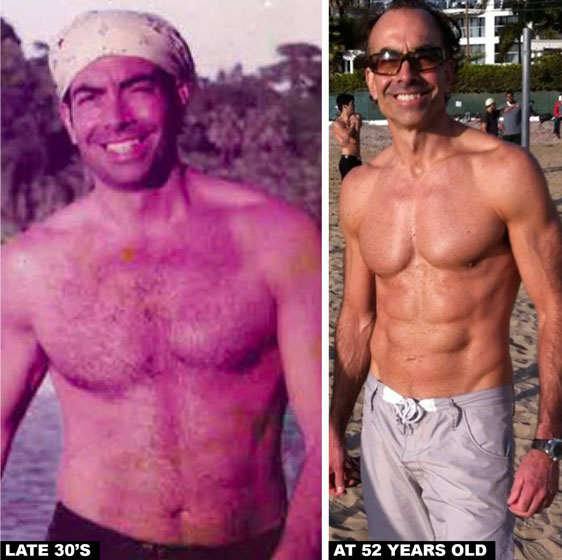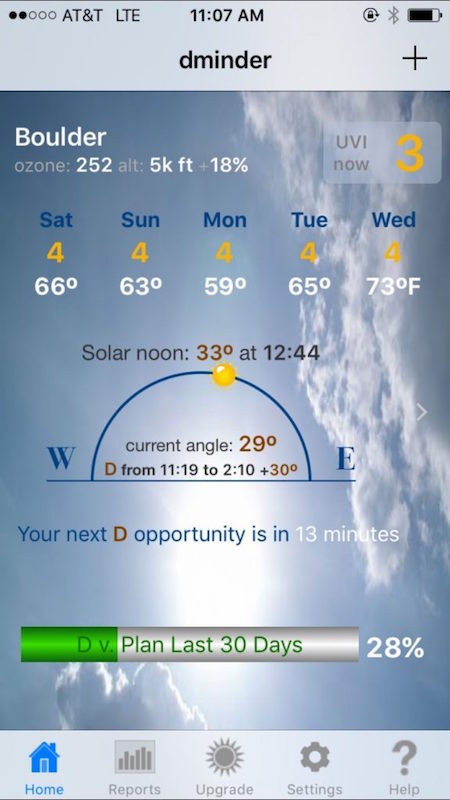
Editor’s Note: This website is not designed to, and should not be construed to, provide medical advice, professional diagnosis, opinion, or treatment to you or any other individual, and is not intended as a substitute for medical or professional care and treatment. Always consult a health professional about before trying out new home therapies or changing your diet.
~
It’s a warm day at the local high school in Boulder, Colorado where I often come to exercise.
Even though it’s December, it’s bone-dry and there’s no snow on the ground—so it was an obvious choice to take advantage of another global warming day and train shirtless, with nearly my entire body exposed to the sun.
Most people take the sun rising every day for granted and do not appreciate the full extent of the role it plays in life on Earth. When it comes to living with vitality, being disease-free, and recovering faster from exercise, there is no pill, food, or any new product or trend that matches the quantum healing properties of the sun.
How can one compete with the four-and-half-billion-year-old star that gives rise to all life on this planet through photosynthesis? It makes sense why all advanced ancient cultures, like the Egyptians who built the pyramids of Giza, worshipped the sun as a god they called Ra.
Can your light environment affect your health?
First, let’s define light environment. Where we live, work, and exercise determines how much and which spectrum of light we receive on a daily basis. It’s important to note that not all light frequencies are created equal! Our light environment has a profound effect on our circadian biology: the intricate interplay of hormones that regulate sleep, mood, blood sugar, sex drive, fertility, and metabolism.
Our patterns of exposure to light and dark determine how well our circadian clock will function, as they set the rhythm for our hormonal fluctuations throughout the day. If this sounds like some kind of New Age health concept, it’s not! Medicine is just now catching up to what the animal kingdom has known all along: the light environment affects everything from mating patterns (longer days in the spring activate sex hormones), to metabolism speed (based on seasonal food availability), to sleep needs (hint: you need more in the winter).
In October of 2017, the Nobel Prize for Medicine went to three researchers who discovered how circadian rhythms regulate our biology and play a crucial role in health. They found that our light environment has a profound effect on our exercise recovery speed, energy level, and overall feeling of well-being—but most people are not aware of how these factors affect our vitality and strength.
Take for example Seasonal Affective Disorder (SAD). Most of us have heard of this condition, and most of us know that it’s important to ingest vitamin D year-round. However, SAD is not just a vitamin D deficiency; it is an indicator of what kind of light environment we are spending most of our time in. Some people are affected by the shorter days much more than others, which goes to show that everyone’s environmental light requirements are different due to our unique, geographical, ancestral DNA code. Other critical factors are age, health status, work and living environment, which all play a role in determining the ideal amount and spectrum of light that is required to have optimal health.
Is a vitamin D supplement equivalent to getting sunlight?
Vitamin D activates the innate immune system, inhibiting over 165 diseases like cancer, diabetes, and multiple sclerosis (MS). Where there are sub-optimal vitamin D levels, we usually find some kind of modern-day disease—there is a direct correlation! For example, while the state of Colorado gets 300 days of sunshine, the intensity of the UV light during the winter months is not high enough to maintain our bodies’ own mechanisms for producing vital vitamin D in the skin. As a matter of fact, approximately 50 to 70 percent of the United States population are deficient in vitamin D, depending on the demographic. Among the elderly in Denver, where the sun shines year around, the deficiency levels are even higher!
Winter sports enthusiasts are under the false impression that we can manufacture vitamin D while skiing or running covered up. Unfortunately, this just isn’t the case.
Boulder is no different in that respect: where I work—a trendy integrated pharmacy called Pharmaca that offers prescriptions and vitamins—customers believe that a synthetic vitamin D manufactured from lamb skin is equivalent to what is made in our skin under the full-spectrum rays from a 4.5 billion year-old star. The pill form is void of the approximately trillions of electromagnetic frequencies from the sun, which is responsible for supporting all of life on this planet!
Think of the sun as an infinite power generator that recharges our human battery (endocrine system) via the eyes and the skin. We all have special photoreceptors in the retina of the eye that are intelligently wired to interpret and decode the electromagnetic frequencies (EMFs) that the sun provides. The body’s conversion of the sun spectrum data (including visible, infrared, and high-frequency, short-wavelength UV range) activates over 2,000 genes.
Unfortunately, most people are under the false impression that the pill form of vitamin D is equivalent in health benefits to full-spectrum sunshine that we have co-evolved with over millions of years.
Is it just me, or does anyone else notice how ridiculous and arrogant modern science has become in its attempt to outsmart nature’s intelligence and try to package it into a pill? Or perhaps man has given too much blind trust to government, Western medicine and science, and the chemical, drug, and food industries?
Reality and vitality check!
This winter, I will be heading south to a place where the UV index is high throughout the year (versus in the Northern Hemisphere where the angle of the sun—and therefore UV index—is low in the winter season when it’s below 30 degrees.
Here is a picture of the UV index in Boulder back in October, before the winter solstice:

Boulder boasts 300 days of sunshine, but during November through February, the maximum UV index is only 3, versus 12 or 13 during the summer months. In order for our bodies to naturally manufacture vitamin D, the UV index has to be a minimum of 3—and that still only gives you minimal production, not nearly enough to sustain the optimal level.
There are many other environmental factors that can inhibit our vitamin D production. I see this all the time among clients who, despite their efforts to get outside, cannot get their levels above 30 ng/mL, which is the lowest threshold of sufficient vitamin D levels. (I recommend you get your levels checked at the end of each summer to ensure your vitamin D inventory is appropriately stocked for the upcoming, low-light winter months.)
That is why this winter, I will be training at the equator where the UV index is 12 to 14 year-round. In this type of light environment, we can easily build our vitamin D potential simply by being outside. Our magnificent control center (our brain and endocrine system) also relies on the sun’s input of specific UV frequencies that we receive through cell receptors in our eyes and skin that tell our bodies to manufacture critical hormones like melatonin and testosterone. Full-spectrum light also drives the production of neurotransmitters like serotonin and dopamine to inspire us to do what we love.
In conclusion, while exercise alone can bring us great joy and euphoric pleasure through moving our bodies and helping us get temporarily out of our left-brain monkey minds, it also matters where we do it. Many of us don’t actively consider how much natural light exposure we get. In our love of convenience, technology, and comfort, we are being conditioned to also exercise indoors, even though most of us already spend too much time living and working in artificial blue light environments, which profoundly affect our circadian biology.
I find that exercising outside is the perfect ritual to recharge and detox my body from the everyday stresses of modern living. If we can exercise outside on a sunny day, then that is what I call a double UberVitality recharge! Sunlight is the fuel we require for the quantum human vehicle to thrive. If you find yourself a bit down this winter, roll up your sleeves and go for a walk in nature, do a polar plunge, or book a trip down south to recharge your quantum being by bathing in nature’s radiance!
~
~
Author: Mauricio Lluch
Image: Author’s own
Editor: Callie Rushton
Copy Editor: Travis May
Social Editor: Waylon Lewis






Read 0 comments and reply